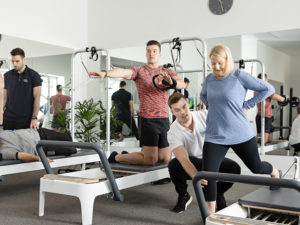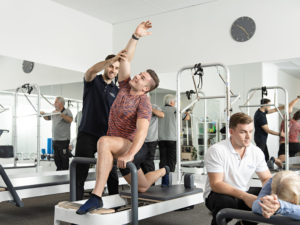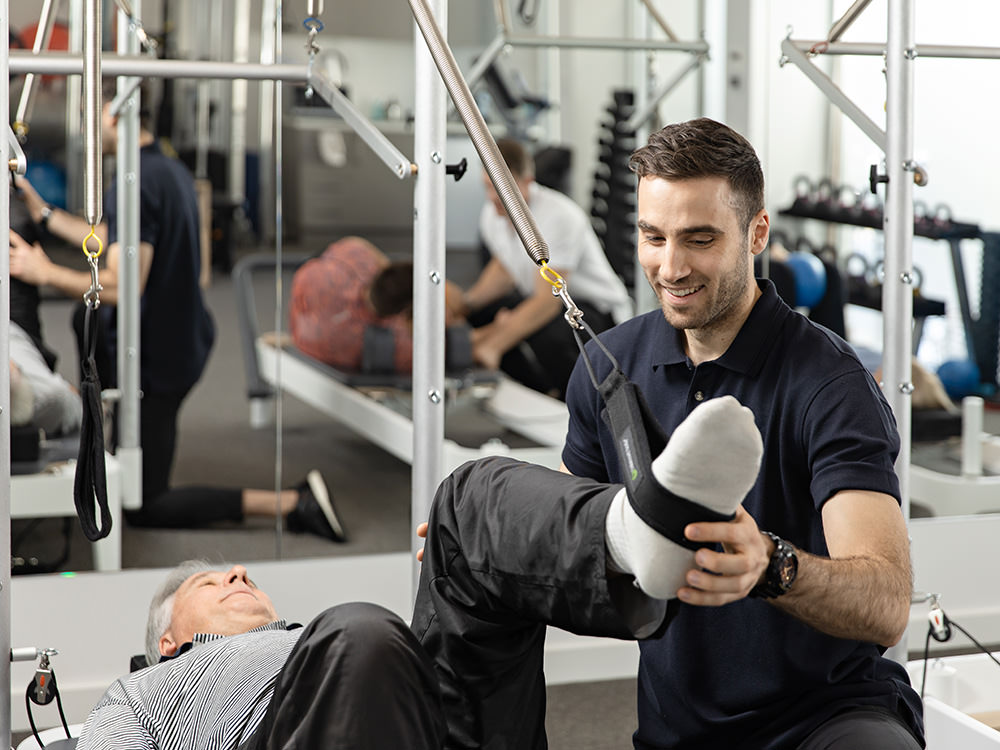Are you someone who hasn’t exercised in many years, or perhaps ever?
Don’t feel like you’re ready for the classic ‘gym’ environment?
Got those long standing aches and pains and have been told exercise will help?
Lacking confidence and not sure where to start??
Read on!
If you answered yes to any of these questions, you are in the right place! If you are reading this blog you probably know that at Thrive, exercise is our treatment of choice. Why? Because it has been proven to make a long lasting change to people’s health! Research has proven that there are a multitude of physical and mental benefits that come with regular exercise.
Physical benefits of exercise include:
- Healthier muscles and bones
- Reduced pain
- Increased strength and flexibility
- Assists with weight control
- Reduced risk of chronic diseases, including cardiovascular disease and diabetes
(Myers 2003)
But the benefits of exercise are not only physical! A single workout has these immediate effects on the brain:
- Keeps brain healthy and prevents cognitive decline
- Reduces stress, anxiety and depression
- Increases energy levels and improved mood
(Rosenbaum et al. 2014)
If you are someone with an injury or long standing issue, research has shown that exercise can specifically help you (Gordon & Bloxham 2016). Exercise is the number one treatment for musculoskeletal conditions!
I have never exercised before – why should I start now?
- The World Health Organisation recommends 150 minutes of strength based training per week, over 2 or more days for adults aged 18 to over 65 years old.
- For adults up to 64 years old the Heart foundation recommends between an hour and 2.5 hours per week of vigorous intensity physical activity (huff and puff!) and strength training 2 days each week.
- It can take as little as 6 weeks to see strength improvements when training 2-3x per week!
How will you know where to start?
We understand that starting anything new can be daunting. That is why seeking help from people who have been there and done that can be vital in making the process a whole lot easier. This might be a friend or family member, a personal trainer or.. Us!
In this next section we’d like to give a little insight into how we approach taking someone, perhaps like yourself, who has previously been inactive, and how we show them the foundations and confidence needed to exercise safely and drive the results you want!
In your initial assessment we will discuss your goals, and what you want to achieve through regular exercise. Physical testing will allow us to get a baseline of your strength and capacity. We do this through assessment of muscle strength and mobility with relevant functional tests which are most applicable to you.
Examples of these tests are:
- Sit to stands in 30 seconds
- 40 metre walk test
- Single leg bridge test
- Timed plank test
- Weighted 10 repetition squats or deadlift
Some people feel confident to go into the group sessions following this initial session, but many complete a block of one on one sessions. This is particularly important if you have a current injury or issue, but also to ensure you are feeling confident!

How do the supervised exercise sessions work?
Small groups of 4 allow lots of personal attention during the hour class! We do not use set programs, so during each session our experienced physios will vary your exercises to continue to work towards your goals, while keeping you interested and engaged.
Everyone is working at their own intensity – be prepared to have a challenging workout but not overwhelming. We continue to check in with you during the classes to manage this.
You will get to do a combination of pilates and gym based exercises, which will be tailored to what you enjoy!
How will I know if I am improving?
After a 6-12 week block of sessions we will reassess the tests from the initial session, which is a great way to measure your progress. After this initial block we expect to see improvements in strength, mobility and general function. We will also discuss your goals, and if these have been achieved set new ones!
To continue seeing progress and ensure you are being pushed at the correct level and to your goals we will check in with you 1:1 regularly. Starting with 6 weekly, and then pushing this out further as you get more comfortable.
We also like to track progress subjectively with outcome measures. We may ask you to fill out a survey with relevant questions to your injury at the start of your journey with us. This will give us a score to later compare to and help to quantify your progress.

So, where to from here?
If you’d like to learn more about how to get started, please don’ hesitate to get in touch with our friendly team. We are here to help and happy to discuss any further queries you have.
Contact us on 8490 0777 or through our website/email.
If you’re ready to start your journey to better health with us, you can book online HERE.
References:
Gordon, R & Bloxham, S 2016, A systematic review of the effects of exercise and physical activity on non-specific chronic lower back pain, Healthcare 4(2), 22, http://doi.org/10.3390/healthcare4020022
Myers, J. (2003), Exercise and Cardiovascular Health, Circulation (2003) 107:e2-e5, originally published January 7, 2003, https://doi.org/10.1161/01.CIR.0000048890.59383.8D
Rosenbaum, S, Tiedemann, A, Sherrington, C, Curtis, J, Ward, PB 2014, Physical activity interventions for people with mental illness: a systematic review and meta-analysis, Journal Clinical Psychiatry 75(9): 964-74.

